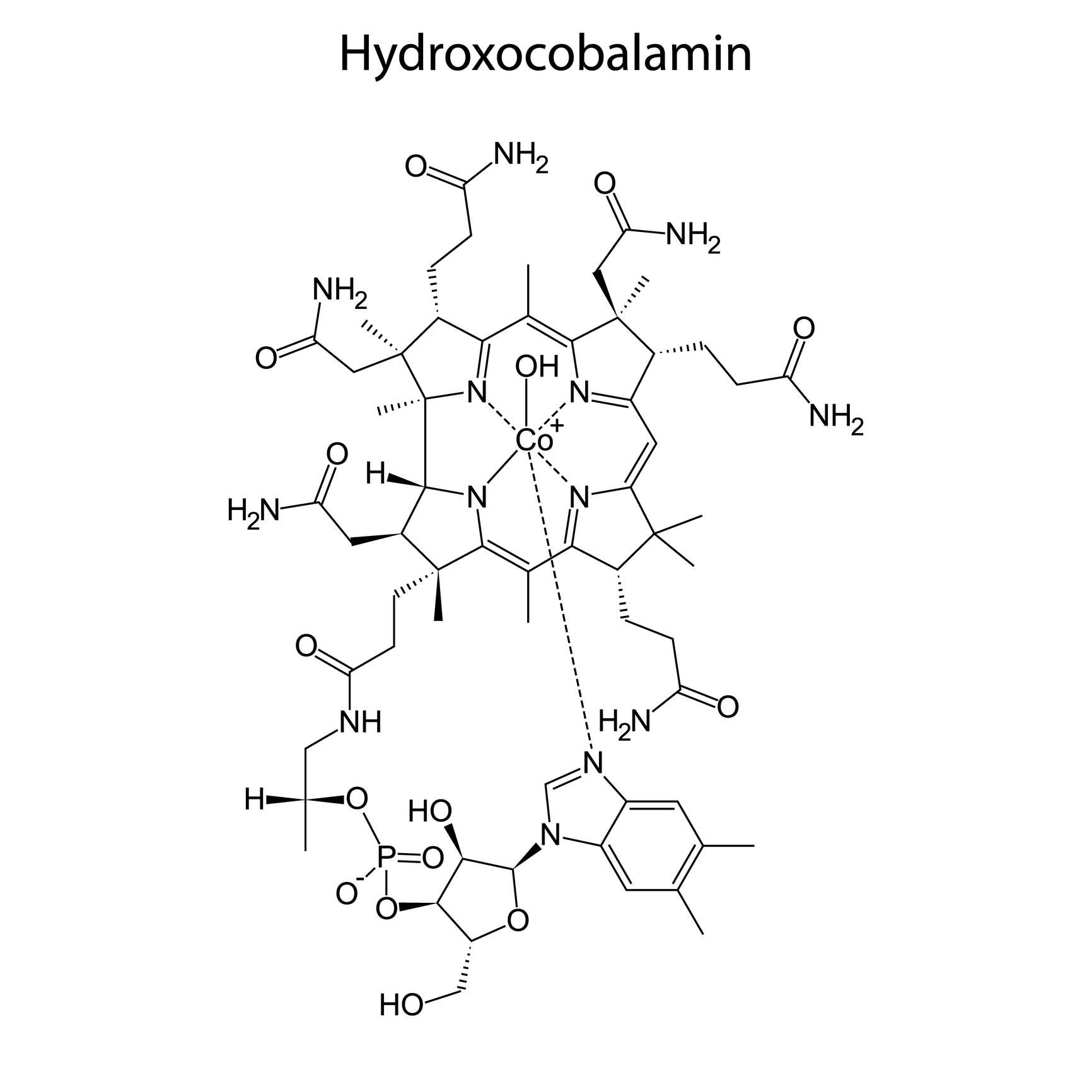Hydroxocobalamin is a prodrug, i.e. an active ingredient that is present in an inactive form and is only converted into the active form in the body after transformation. It is converted in the body to methylcobalamin and 5-deoxyadenosylcobalamin. Both are active forms of vitamin B12 and can be stored in this form in the body.
Hydroxocobalamin is taken up (absorbed) in the gastrointestinal tract, specifically in the lower part of the ileum (section of the small intestine). It is stored in the liver and is excreted in the urine.
Vitamin B12 is a key building block in metabolism. It is needed in blood formation (hematopoiesis), cell division, myelin formation (an insulating layer of nerve cells in the brain) and nucleic acid synthesis (synthesis of the components of human DNA).
Hydroxocobalamin is used to treat vitamin B12 deficiency, poor performance, fatigue and difficulty concentrating. It is used as an ointment for the treatment of psoriasis, as a dietary supplement and as an antidote for hydrocyanic acid poisoning. Hydroxocobalamin is found in meat, fish, eggs and milk.
In cases of hydrogen cyanide poisoning, the hydrogen cyanide is bound to the hydroxocobalamin and then excreted through the kidneys. Hydrogen cyanide poisoning occurs mainly in smoke inhalation, especially in indoor fires.
Hydroxocobalamin is responsible for the formation of methionine in the body. Methionine is used for the production (synthesis) of the DNA and RNA building blocks adenine, guanine and thymidine. If hydroxocobalamin is lacking, there is a deficiency of these building blocks, resulting in impaired cell division activity in the bone marrow. This leads to the absence of various blood cells, of which the deficiency of red blood cells (erythrocytes) is most noticeable.



